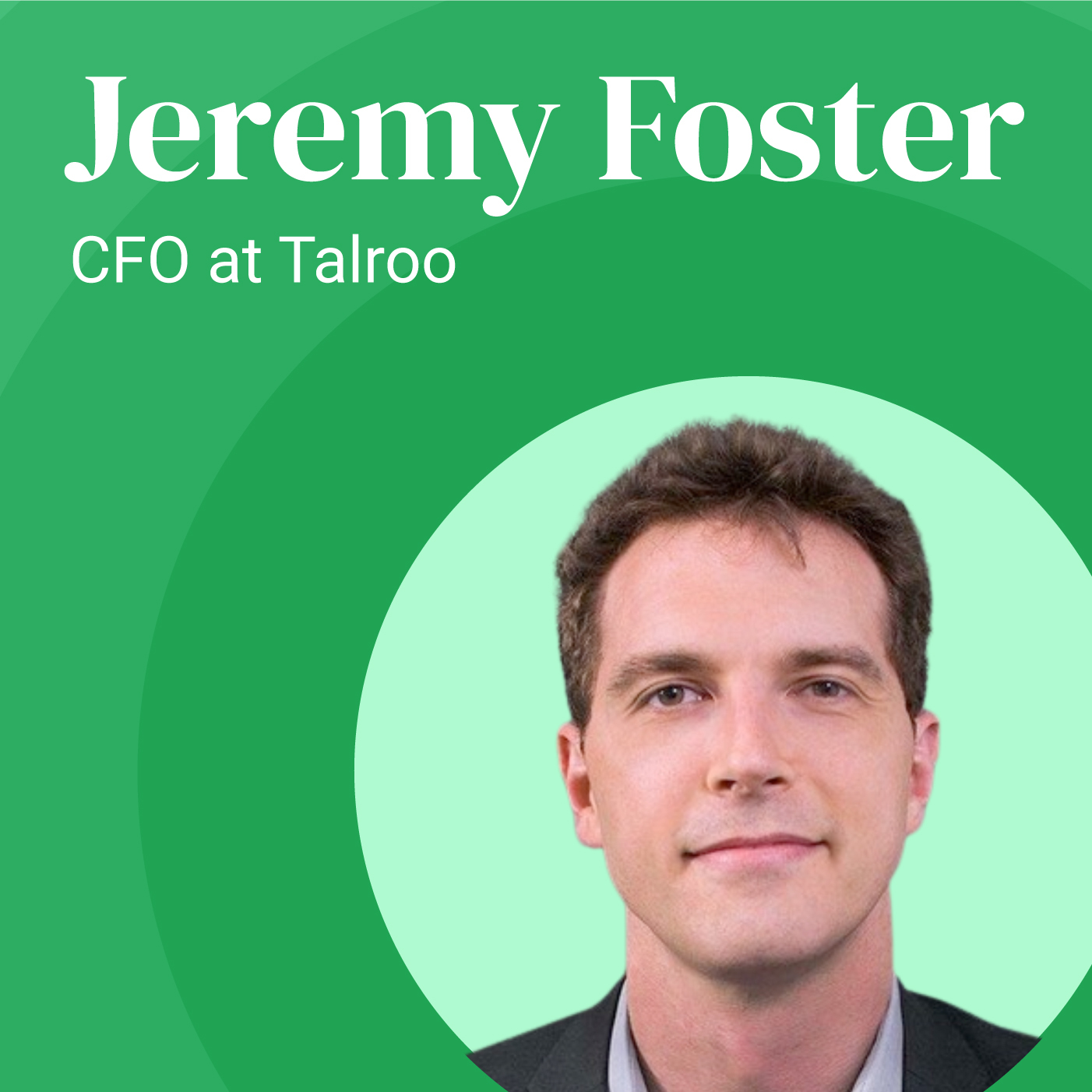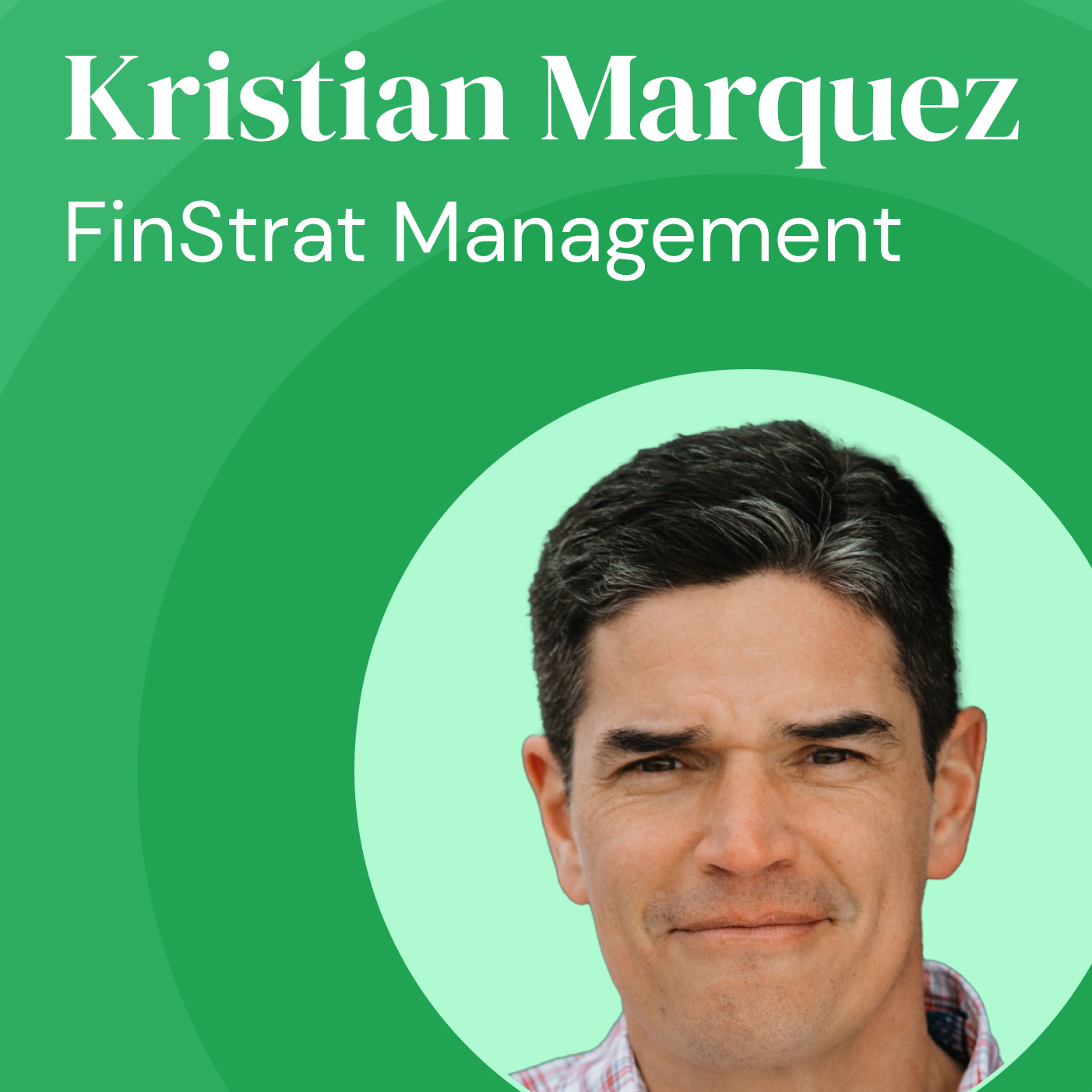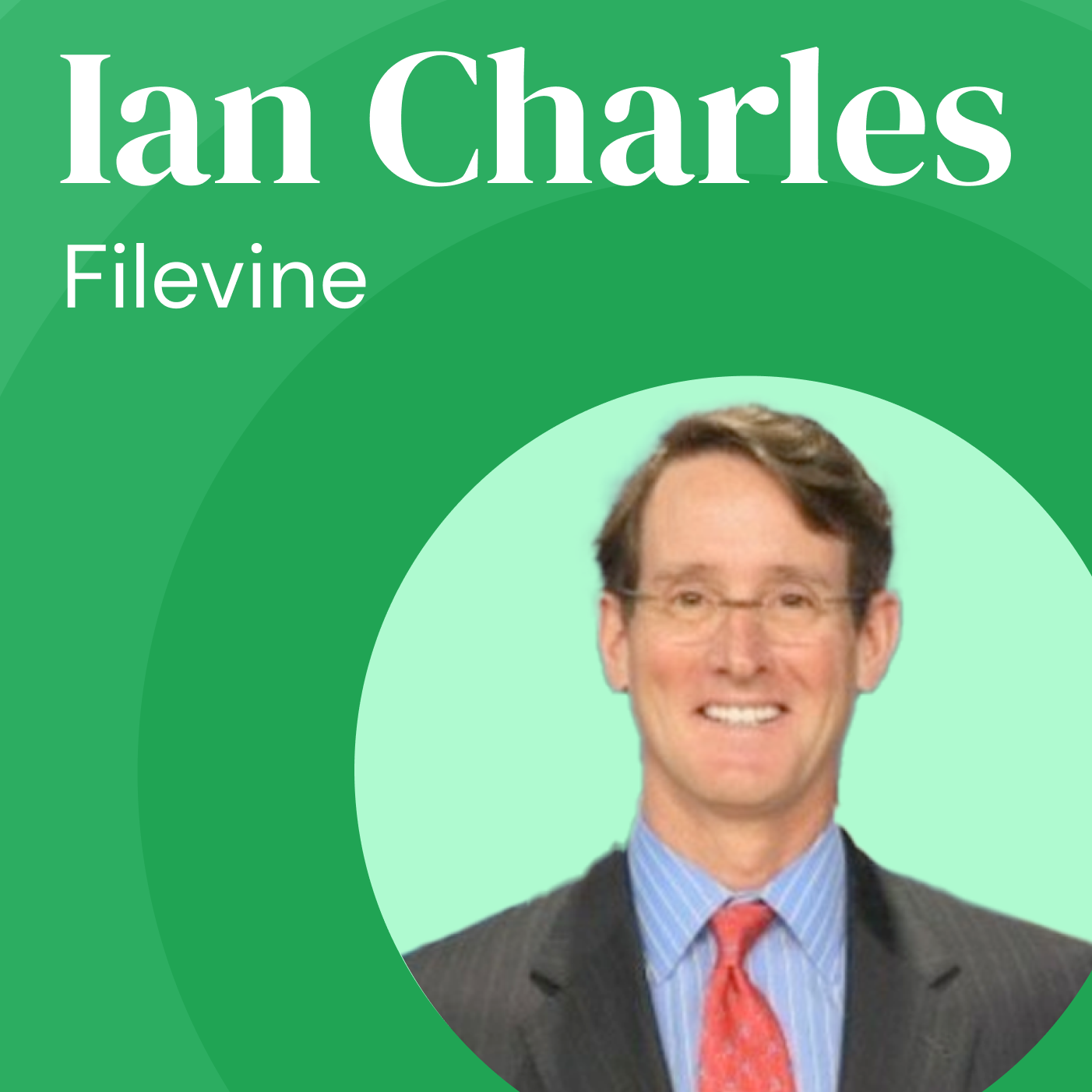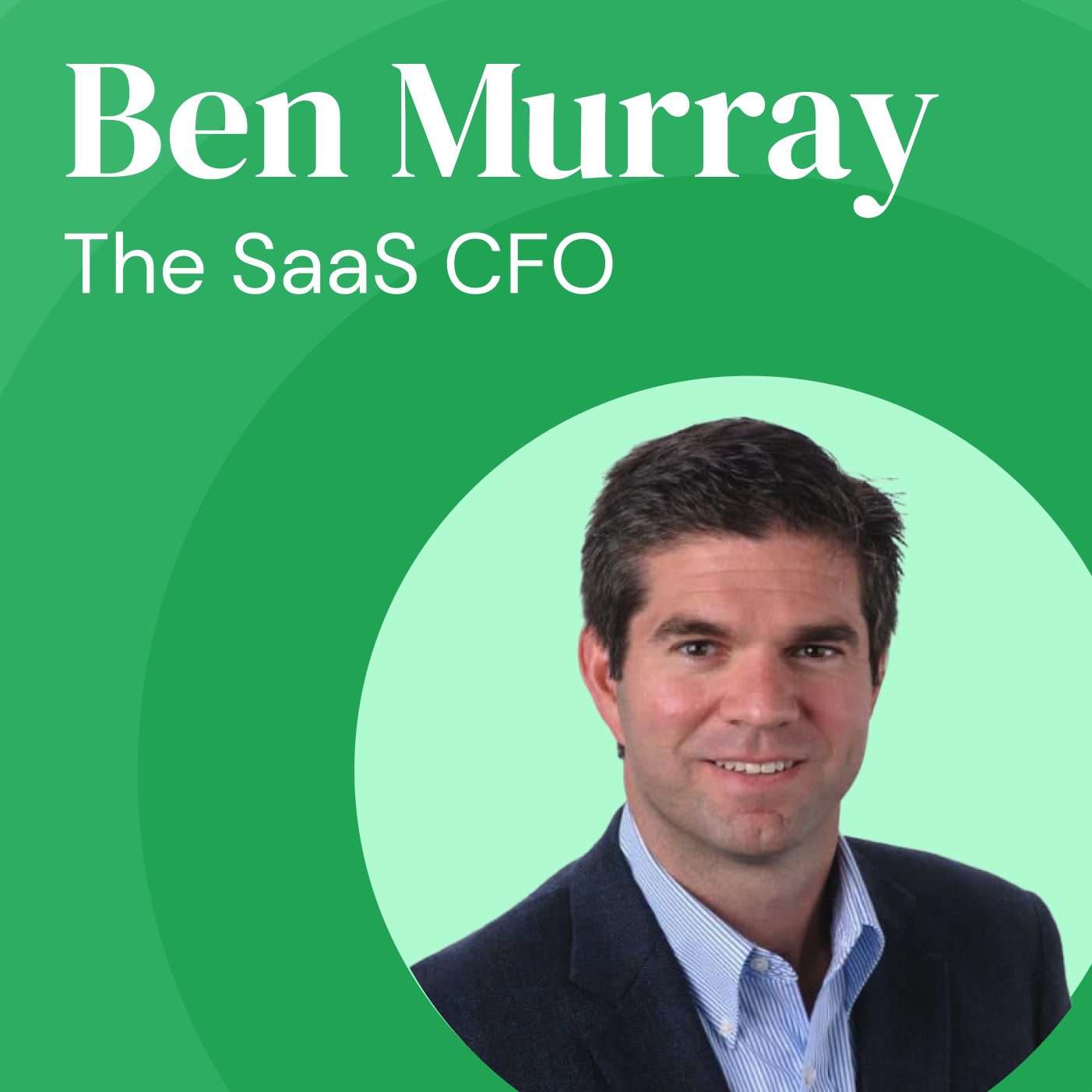Finance: The Nervous System of the Business | Jeremy Foster
- 0.5
- 1
- 1.25
- 1.5
- 1.75
- 2
Rowan Tonkin: Hi, I'm your host, Rowan Tonkin, and welcome to Being Planful, the show for FP& A leaders and planning experts. All right. Welcome everyone to the Being Planful Podcast. My name is Rowan Tonkin, and I'm your host. And I'm really excited to be joined by Jeremy Foster of Talroo Today. Jeremy is the CFO at Talroo. He has spent about 10 years as CFO at various companies prior to that and has also been a CMO and a CEO for a community bank. So Jeremy, thank you for joining the podcast and really looking forward to this conversation.
Jeremy Foster: Thanks, Rowan. COO at the community bank, but otherwise yeah, absolutely. It's been a fun ride and I've really enjoyed the last 20 years and look forward to sharing a little bit with your audience today.
Rowan Tonkin: Yeah. So 20 years as a CFO and COO, I'm not going to give you the credit of CMO anymore, but you probably wouldn't have lasted that long. I think our average tenure is getting down to 12 months now.
Jeremy Foster: Sorry, I've had top marketing ops and just got the CE, no E.
Rowan Tonkin: Yeah. Fair enough.
Jeremy Foster: I'm an X, I'm a CXO, is probably the best way to talk about my background I guess.
Rowan Tonkin: Good. Yeah, that's fun. Well, I think that's going to drive a lot of this conversation then. So folks, we're talking with someone who's been in the business and help the business now as a CFO, and so I think we're going to have a very business oriented conversation. So Jeremy, let's talk a little bit about kind of your experiences in the places you've been. I know in pre- show we were talking a little bit, you come in where the company is going through some fundamental shifts in strategy or shifts in growth. You want to talk a little bit about that and how you think about as you come in, what do you put in place to actually continue or drive that shift, drive that change?
Jeremy Foster: Yeah, that's a great question. To some degree, it depends on what the organization needs. Right? So the first thing I try to do when I come into a business is look at where there may have been some gaps in visibility. A lot of times I've been blessed to come to organizations that are largely well led. They've got good CEOs, they've got good executive teams, but they may not have had the best visibility to what's happening in the business. And so in that type of a situation, most of the time it's about cleaning off the windshield so people can see where they're going. And that may be as simple as standing up kind of the core gap financials so that they can have good understanding of what may not have been classified the right way. It may be as complicated as developing a suite of kind of unique metrics and KPIs that are relevant only to that business, but they're hyper relevant to that business. So an example of that would be at Kasasa, we had a business model where we'd partner with community banks and credit unions and we would largely get paid as a function of our success. So most of our revenue was based on the number of checking accounts that we helped those clients acquire. And that number would grow dramatically over the life of a client. And so a big part of trying to understand the value of each new client that we sold, it wasn't just, " Here's a$2, 000 monthly license fee on a contract that's going to get paid for the next three years." It was, " Here's a bank or a credit union of this size, and this is what their onboarding activity looks like." And so therefore, we can project and predict with a pretty high degree of accuracy over the next five years, what that's going to grow to, how many checking accounts they're going to bring in, and what our price per account's going to be, and then therefore what the lifetime value for that's going to be.
Rowan Tonkin: So standing up core gap financials, obviously that's a much dirtier windshield really, right?
Jeremy Foster: Yep.
Rowan Tonkin: At that point, the windshield's really dirty and you're coming in and really doing that kind of getting the hose, sorting everything out and getting to this next level. That's kind of building the heads up display, right?
Jeremy Foster: That's right.
Rowan Tonkin: Yeah.
Jeremy Foster: That's a great way to think about it.
Rowan Tonkin: So what do you find the most fun part of doing that? Where do you kind of find the most enjoyment?
Jeremy Foster: I really love understanding the dynamics and the drivers of the different product lines.
Rowan Tonkin: Yeah.
Jeremy Foster: For each company, right? Getting visibility to the value that gets created by a product. And usually, a lot of times I work with B to B to C businesses. So they're deploying consumer oriented products or they're reaching consumers, but they're doing it on behalf of or through kind of established businesses. And so in that model, it's really fun to understand here's the value that gets created for the end consumer, here's how that translates to value for our clients, for the businesses that we're reaching those consumers through, and then here's how that translates to value for us. And making sure that there's both, from a pricing perspective and a performance perspective, making sure that there's enough value created through that full chain that everybody wins. That to me is really the fun part of business.
Rowan Tonkin: And in that value chain that you just talked through, is part of the complexity and probably why you need to get brought in to do that cleaning up. Right? And I'm not saying you only come in to clean up things. I'm sure you've been at places for long tenured. The clean ups the first year or first nine months.
Jeremy Foster: Yeah.
Rowan Tonkin: And it's all adding value, right? But in that value chain, is that part of the reason why companies get to that kind of place where growth may stagnate because they don't have that visibility because that supply chain is much more complicated?
Jeremy Foster: I think that's a part of it. I think it's a good insight. The more complicated the supply chain gets, and the more parties that, and especially particularly with a complicated supply chain, you can manage that with an individual client a lot of the times. But when you go to 500 or 800 or a thousand businesses that all have their own different dynamics, you have to have systems that can be consistent and still fare for everyone involved through that process. And that can be a tricky thing. So I think that's a really key insight. The other thing I would say is I think when businesses are small, one of the most important things, particularly for startup founders is they find the next most immediate risk or opportunity for the business, they tackle it and they make that thing work. Right? So most of the time, if you're talking about a startup, it's how do we get the product live? Or it's how do I get my first customer? Or how do I make sure that we're actually monetizing this first client the right way? It's like a problem that you can see coming. The bigger an organization gets, the more of those start to come in at different paces and at different times. And I think one of the key benefits a scaling CFO can provide in that environment is if you can start to stage gate and say, " Okay, this problem is going to hit in June or July, right? We're selling fast enough that in June we're going to need more people to onboard our clients. And then in September we're going to need more account managers to support those clients. And then in next March, we're going to start running out of the number of people that we can actually reach." Those things, and being able to start at least highlighting at a high level for the team, this is when those limits on the business are going to start to hit, you can start to time the effort of the organization so that you don't hit this ceiling and then clear that ceiling and wait a year to figure out what the next ceiling is and then hit your head. And I think that's a key function that a scaling CFO can provide for businesses that are... I've typically worked with organizations in the 50 million to 200 million revenue range. I've worked with startups that have gotten to that kind of range. But a lot of times folks hit that at kind of the, call it the 20 to 50 million dollar mark, I would say. Companies get big enough that they may not have built the systems to identify all those constraints as they come in.
Rowan Tonkin: Yeah. I mean, internally we talk here at Planful about there being three types of metrics within a business. Right? There's the operational metrics, which for you is in that description, account manager, sales capacity, right? Or support capacity. Then there's the commercial metrics, which are number of checking accounts, number of this, number of that. And then there's the financial metrics, which are the actual lifetime value, right?
Jeremy Foster: Right.
Rowan Tonkin: And what happens, what I've observed happen in more kind of immature businesses as they grow is they might have a really good handle on the operational metrics, but they never connect them through to the commercial or to the financial metrics. And that's where CFOs like yourself can come in and say, " Well, this is how the big picture works. Now we need to go and build the models that support this and go and connect that all the way through from wherever that operational driver is all the way through to the financial outcomes." And obviously, the more predictably we can all do that, everyone's happy. But yeah, hearing from you that that's kind of the stage dating that a CFO comes in for, what do you then look for from the business for you to go and do your job in that kind of first year successfully?
Jeremy Foster: Yeah, you've got to have candor and honesty from your team. There's a world of difference when you have an executive team that's all pulling in the same direction. The CEO's recruited people who are focused on the big picture. Everybody wants the whole company to succeed. There's a world of difference between that and kind of an organization built on these little individual empires where everybody cares more about their career than they do about the success of the organization. And it's really hard to do the job as the CFO if you can't get the truth out of everybody, right?
Rowan Tonkin: Yeah.
Jeremy Foster: If everybody will give you an accurate assessment of what's going on in the business, then you can go out and you can build the metrics to help people understand each other pretty well. If people are intentionally dishonest, that's really hard. The other thing that could be a challenge but hasn't really been as prevalent, I'd guess as a challenge in my career thankfully, is you might have people who are in positions that they've only been in, they haven't been in long enough to really understand what's going on in their department at a gut level. But if you're in a situation where everybody's candid, honest, open with each other, they have a gut, good at least gut feel of what's going on in their organization, then you can go in and you can start to build the connective tissue, the nervous system, to help tie those departments together so people can kind of see what's happening.
Rowan Tonkin: And so for you, I know you talk about the nervous system, finance being the nervous system of the business. I think most businesses are having a central nervous system, kind of little shock at the moment. What other kind of fundamentals of that system that you look to employ?
Jeremy Foster: Yeah. So I'll continue that analogy and maybe overdo it a bit. So if I...
Rowan Tonkin: Okay.
Jeremy Foster: If I beat the analogy into the dirt, feel free to tell me to let it drop. But the first thing is making sure that you've got kind of the oxygen coming in and getting to the body. Right? You got to have visibility to your cash flow. This is particularly true of startups a lot of times. If you want to think about the core gap financials, some businesses are cash flow driven, some businesses are income statement driven, some businesses are balance sheet driven. For the most part, tech companies live in the financial, the profit and loss statement is the main thing because you can go raise more capital, right? As long as things look good. And startups at the very, very early stages may have to live more in the cash flow side of that to get there, right? They may really have to look at it and be very thoughtful about where they're spending. And so the first is, can you make payroll? Can you deliver your services for your clients? The second thing then I would say is about how are you allocating that, the blood flow, getting the oxygen out to the different parts of the body? How are you allocating and prioritizing the allocation of those resources for ongoing and continuous growth or profitability or both depending on the organization that you're working in? And then more mature businesses, sometimes, particularly banks, which I do have a pretty significant amount of experience with. Those tend to be more balance sheet driven, banks, manufacturing companies, companies with big assets and lots of leverage.
Rowan Tonkin: Yeah.
Jeremy Foster: Oil. They may be more balance sheet driven businesses. But for the most part, I kind of think of it as are we getting enough resources to be able to get either to our next round of funding or to continue to scale as aggressively as we want to scale without needing any funding at all? And a lot of times the ideal is to be able to transform from the first to the second. You can end up being a lot less, I think blitzscaling. The, " Hey, we'll spend more money to generate revenue than we're going to get from the revenue." Right? That approach has worked pretty well for the last 10 years for a number of tech companies. And there are examples of where it really makes sense. It can make a lot of sense in a situation where you have a limited amount of time to grab market share and you may not have a great technological moat. And so like Netflix, you want to go out and get as many users as you can. That can make some sense. I think the global climate that we're moving into, there's going to be a lot more focus on figuring out how you can fuel sustainable growth without perpetual capital raises.
Rowan Tonkin: Yeah. Yeah. I mean, you can see Wall Street is currently hammering anyone that doesn't have good profitability. Right? The tech sectors that are doing well are those that are in that mindset where they can just reinvest in their own growth and aren't relying on heavy amounts of capital.
Jeremy Foster: That's right.
Rowan Tonkin: Actually, for those listeners, a really good book around that blitzscaling methodology is Frank Slootman. He's currently the CEO of Snowflake and was CEO of ServiceNow. His book, Amp it Up is a really light read, but highly recommend it for everyone if you want to kind of hear from the CEO of someone who drives blitzscaling. Have you happened to read that one, Jeremy, or not?
Jeremy Foster: I haven't read that one.
Rowan Tonkin: Yeah.
Jeremy Foster: I have read Reid Hoffman's book.
Rowan Tonkin: Yeah. Right.
Jeremy Foster: Yeah. There's situations, and one of the companies I was at is kind of a classic example of blitzscaling. They went out and grabbed as much market share through multiple high value rounds as they could. And it made a lot of sense. To your point, I think there comes some transition period where either environmentally or simply to avoid ongoing dilution, hopefully at some point you get to the point where you don't need it all the time.
Rowan Tonkin: Yeah. What was your experience as a CFO of blitzscaling business like that? How did you think differently?
Jeremy Foster: A lot of it was just how do you pay attention to the metrics that are going to get you the best valuation on your next round? So if you're focused on getting that initial capital to be able to kind of stair- step to another round, then the question really becomes what are investors going to look for? What are incoming new investors going to look for to cut another bigger check at a higher valuation?
Rowan Tonkin: And then so that in turn says, all right, you're looking for that.
Rowan Tonkin: How do you go and facilitate that in the business to make sure that we're getting those metrics? And so how do you approach that as the CFO more internally?
Jeremy Foster: Yeah. So maybe let's say your key metrics are, let's say your key metrics are number of businesses, business partners that you've acquired, the attach rate to their consumers, and then the amount that you're able to charge for each product sold to those consumers. Right? If those are your three key metrics, then it really is about, first of all, building out pretty clean tracking and realistic, achievable projections around what that could look like for each step. And then getting the various departments or parties who are responsible for each of those deliverables to agree on what's achievable. Right? So you might have a sales team that's responsible for acquiring. In the case of Talroo, we have a sales team that is responsible for acquiring new employer relationships, right? New retail employer relationships. We also have a technology and engineering team that's responsible for making sure that we can deliver high quality job seeker candidates through our technology platform. And then we have essentially configuration and account management teams responsible for making sure that those two tie together, right? And that each individual employer's interests and what they're willing to pay per application, the quality of candidates they're looking for, the key metrics that'll help them make the right hiring decisions, making sure that our system is really configured to deliver that for them. And all three of those parties have to be involved in that process. And it can be as simple as, here's the incoming budget that we got from a client, what they're willing to spend, here's the cost per application that they want to target for being able to reach those, to attract those candidates. And then is the technology delivering at that level? And then it can be, okay, what is our budget utilization? How much of that are we actually fulfilling? What is our retention? Some of those can get pretty complicated when you start looking at retention that isn't contractual. Right? If you're...
Rowan Tonkin: Yeah.
Jeremy Foster: It's very easy to establish lifetime value for a software platform with five year contracts at a thousand dollars monthly license fee. It can be much more complicated with performance based pricing models.
Rowan Tonkin: Yeah. I'm just thinking how glad I am I'm not in that environment. That would be tricky. And so how do you manage the predictability of that then?
Jeremy Foster: So sometimes you do the best you can and it's not perfect, right?
Rowan Tonkin: Yeah.
Jeremy Foster: I would say, and I think the team at Talroo would agree, we've come a long way in the last couple of years, but it's still tough to predict sometimes.
Rowan Tonkin: Yeah.
Jeremy Foster: When the hiring environment changes and you've got inflation rolling through, and sometimes it's difficult to predict. Other times at Kasasa, we were able to build a predictable model that, again, kind of with that per checking account model, we built out frameworks that were accurate enough that I'd give my director of FP& A a hard time if we missed revenue by more than 1% on that.
Rowan Tonkin: Right, yeah.
Jeremy Foster: We predict 14 months in advance what these clients are going to look like, and we built individual client revenue proformas, and then every individual client became their own line item in our revenue model. And so some of that is about, you look at the law of large numbers and you take statistical learnings from things like, okay, I've got a base of 700 credit unions and community banks, and I can see how based on the number of branches that they have and based on what their historical checking account acquisition has been, I can predict when they come in what they're going to look like. Then you turn that into a five year individual proforma for that client and then take that proforma and gel it down to a single line item, like months in columns one row for that client. If you lose a client, you delete a row. Right? If you see a significant change in account acquisition, you change that row or you change the proforma and then update that row.
Rowan Tonkin: Yeah.
Jeremy Foster: Then you've got a highly accurate, highly predictable model because you took the data from this large data set of a couple million checking accounts, you used that to predict seven or 800 individual client performance like profiles, and then you built to a single line item from the roundup aggregates of that, if that makes sense. And so...
Rowan Tonkin: Yeah. Yeah.
Jeremy Foster: It's much. The lazy, easy way to do it is to say, " Hey, I'm just going to guess, this is a single line item. We grew by 10% last year, we're going to grow by 10% next year." And by far, I would say the most common cause of missed revenue forecasts when I first come to an organization is somebody taking a percentage revenue growth number from the last two or three years and extrapolating that out as a fixed percentage. And that is not only short, kind of shorthand that you shouldn't use, it is systematically wrong. Because if you want to think about what causes most businesses to run into limitations, attrition functions as a percentage of your size, right? If you have a 1% monthly attrition rate and you have a hundred thousand clients or a hundred...
Rowan Tonkin: Yeah.
Jeremy Foster: A hundred thousand customers, whatever you want to use, then every month you're going to lose a thousand of those customers. If you have a million of them, every month you're going to lose 10, 000 of them. And so you have to think of the fact that really attrition tends to be percentage driven outside of some kind of intervention. Sales is not percentage driven. And people a lot of times operate in the opposite framework. Right? They look at it and they just say, " Hey, we've been growing sales at 20%, so it's going to keep going at 20%." Well, not if you don't invest in your sales team, not if you don't... right? And so that I think is a key thing.
Rowan Tonkin: Yeah. And this comes back down to what are the operational drivers, right? The commercial drivers of those core financial metrics. This isn't to say, and I'm going to take words out of your mouth, this isn't to say that having that macro math of the business is helpful in shortcut mode where you're inaudible.
Jeremy Foster: Yeah.
Rowan Tonkin: Like, oh, normally it behaves like this in a macro environment. But you have to get the micro math of the business that is that driver based roll up to then...
Jeremy Foster: Yeah.
Rowan Tonkin: Get to the macro math of the business.
Jeremy Foster: Yeah, I think that's a great way to think about it. It's a round trip. Right? You look at the macro to try to understand what's going on. You use that to hone in on areas that are really the most important metrics and drivers. Then you go look at those metrics and drivers and from there you start to build up kind of ground up forecasting.
Rowan Tonkin: Yeah. And I guess, you've been at businesses that you've gone through those transformational changes. Right? And so how have you seen those kind of micro drivers change and the business, therefore the macro change at the same time?
Jeremy Foster: Yeah. So great question. So I would say with Talroo, we've experienced a lot of very fast growth over the last two years. And a lot of it came from really two primary channels. One was our dev team did a great job continuing to build out that ability to acquire new job seekers. The other was that we built a retail sales team that was able to go out and acquire new retail customers. There were tailwinds that went along with that as well. Right? We encountered some headwinds during Q2 and Q3 of 2020 when COVID hit the US really hard and everybody froze and nobody was hiring. Well, if you're in recruitment marketing, there's a macro trend that's pretty meaningful when nobody's hiring, right?
Rowan Tonkin: Yeah.
Jeremy Foster: And then you do get some tailwinds when people start hiring to make up for that. And now the Fed seems pretty determined to push us into a contractionary cycle again. So you kind of have to weigh those and look at it. And you might do something like look at market share, right? Or do to the extent that you can say, " All right, this is what seems to be the result of the macro trend. This is what seems to be the results of these individual initiatives that we've driven." Even that out. You want to make it as much science as you can, but to some degree it's art too. Right? You make estimates based on the change in the amount of unfilled job vacancies in the US. And some of it's a little bit of sausage making, but you do the best that you can.
Rowan Tonkin: And I can only imagine how imperfect that data is now with the gig economy and this subscriber economy and all of that.
Jeremy Foster: You got it.
Rowan Tonkin: Stuff going on and everyone moving to more flexible work, mobility at an all time high. Yeah, good luck.
Jeremy Foster: You got it. It could be difficult to build highly predictive models in that environment for sure.
Rowan Tonkin: Well, A, I don't think you can, because the environment changes too fast. Right? You could have a new regulation and it could just be a simple, an inflation rate hike and next thing you know, everyone's changing their decision making and you're a victim of it at some point.
Jeremy Foster: And I think that's a really key insight. A lot of what you have to bias towards, I would say probably particularly in tech relative to maybe banking. But I would say that you have to find that balance between precision, insight and speed. Right? And what you're really going for is how can you deliver key information to the business that's relevant by the time they get it and useful for decision making. And how you do that, I mean, it's tough to be prescriptive about that, because I think it varies business to business.
Rowan Tonkin: Yeah, absolutely. I think the key value that you would be looking for is the agility with control. I mean, every CFO is looking for that. Right? The control would be lovely predictability, great controls on what's going in and out of the business and everything being a perfectly predictable machine. That's every investor's dream.
Jeremy Foster: Yep.
Rowan Tonkin: But the reality is we've got the other side of the coin, which is everything's changing around us faster than ever and we need the agility. And so that trade off I can only imagine is very, very difficult from a CFO perspective.
Jeremy Foster: Yeah. And I suspect that based on the handful of businesses I've been at in the last 20 years, I would suspect that most CFOs bias too heavily towards traditional controls, don't invest aggressively enough in insight into the key drivers and don't share that insight enough with the company. I think those are probably a couple of the trends I would guess I've seen.
Rowan Tonkin: Yeah. And I would, we talk a lot about finance trying to help elevate the financial IQ of the rest of the business. Right? And there are a lot of people out there that don't understand what you do because A, they never studied accounting, they didn't get an economics degree, they may never have got their MBA, but they're leading core functions of a business because they're very skilled at what they do in their part of the business. But they also don't understand that you're looking for some of those drivers, right?
Jeremy Foster: Yep.
Rowan Tonkin: Like a marketing function, we've got lots of drivers that we've got all access to all sorts of crazy intent data and buying data from all sorts of places. But distilling that into something that I can give to finance, I need help with, I need my...
Jeremy Foster: Yeah.
Rowan Tonkin: My FP& A lead or my CFO in the boat with me saying, " Hey, you've got access to information. I don't know what it is. I don't know how you get it."
Jeremy Foster: But it's killer and I'd love to have it. Right?
Rowan Tonkin: Yeah.
Jeremy Foster: Yeah.
Rowan Tonkin: Exactly. And so we often hear about that, the challenge of GNA functions like yourself is you are often under- resourced in your ability to go and service our function. So how do you think about that?
Jeremy Foster: Man, that is... I would say that is a constant challenge. So there's a couple of things. One is you can provide tremendous value very early just through helping everybody understand some very fundamental basics, like here's what we mean when we say revenue, here's what we mean when we say gross profit, here's what our operating expense means. And just some very basic education through the organization can help those teams start to understand enough that they can surface to you, so you're not constantly having to go and dig. They can surface to you when something may not be right. Or when there may be an opportunity that may be being missed. So to use your example of the marketing team, if they understand that, " Hey..." If you've had the conversation that says, " Hey, we're a little bit worried about our ability to maintain our price point over the next three years because we don't understand enough about consumer demand today through our clients." And they can say, " Well..." If they know that and they understand, okay, this is what contribution margin is, this is how we're priced today. If they've got a handle on those metrics, they can look at it and go, " Jeremy, I'm not too worried about that because I'm seeing our conversion rates tick up." Right? And maybe we can look at that and start to see whether there's a bigger opportunity in this product line than we realized. And so if they surface that, as opposed to you having to go out and ask all those questions, that can be tremendously important from the perspective of insight and efficiency of staffing. I'd say the other thing, you can end up, I've over democratized at times too, where...
Rowan Tonkin: Yeah.
Jeremy Foster: I try to build a utility function and let sales grab these team members, and then it can turn into a situation where sales is trying to ask a single question and it turns into a recurring, permanently developed report that only gets looked at once. And we took all the time to develop that into a permanent report. Right? And you can make that mistake too. And so I think it's, you're always learning as you run through this. And I think you just have to say, " Okay, I made that mistake. Let's go the other direction a little bit," and...
Rowan Tonkin: Yeah.
Jeremy Foster: And figure it out.
Rowan Tonkin: Yeah, I think now we're coming up to the end of our time here. For sure, listeners, up until this point would take away here, there's only so much perfection we can go and create. And that's a great example of it. Because we're at the kind of mercy of lots of external factors, right? Well beyond our control every day. And so it's our jobs as business leaders, as finance leaders to really think about, Okay, well, how do we just prepare for that oncoming onslaught of change? And I don't know if you can ever be ready for it, but be ready that it's going to happen.
Jeremy Foster: Yeah.
Rowan Tonkin: Are there any kind of final parting words for our audience that you'd love to kind of share with the group?
Jeremy Foster: I think the best thing we can do as CFOs for most organizations is think about communication. If the finance function is the nervous system, then it's important to make sure signals are getting where they need to go. And as long as the organization's talking to each other, most problems are manageable.
Rowan Tonkin: I love that. So where can listeners connect with you, Jeremy?
Jeremy Foster: You can reach me at JFoster @ talroo. com and happy to field any thoughts or just meet folks.
Rowan Tonkin: Yeah, awesome. Well, really appreciate your time today. Thank you so much for sharing kind of your experiences and your wisdom. I'm sure our listeners appreciate it. Thanks, Jeremy.
Jeremy Foster: Take care.
Rowan Tonkin: Make sure you hit subscribe on Apple Podcast, Google Play, Spotify, or wherever you get your podcast so you don't miss an episode. Thanks for stopping by.
DESCRIPTION
Jeremy Foster, CFO at Talroo, describes the finance function as the “nervous system” of the business. He has a track record of joining companies during times of growth and change, and is tasked with helping them scale in a healthy, sustainable way. How? By developing a unique set of KPIs that function for the business and its product lines, delivering timely information that's relevant and useful for decision-making, and staying in constant communication in order to respond to changing market conditions. Like a nervous system, sending the right signals from the finance team to the right stakeholders keeps the company healthy and focused on strategies for success. Tune in to the full episode to learn more.









